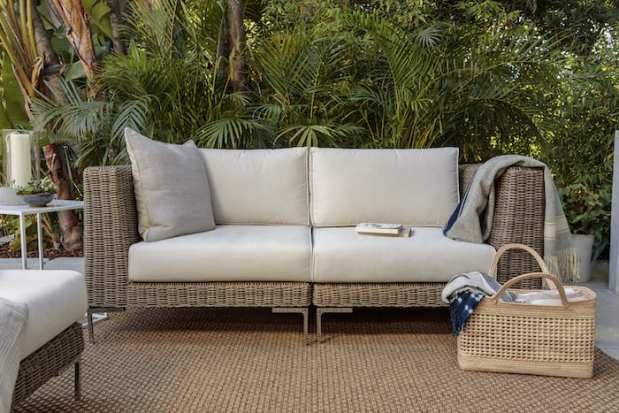Outer On Tapping D2C ‘Neighborhood Showrooms’ For eFurniture

In an age of eCommerce brands opening up pop-up shops and permanent stores, some companies are taking a different approach to showcasing their products in real life. Furniture brand Outer, for instance, seeks to tap into the direct-to-consumer (D2C) model to deliver a quality sofa to the mainstream consumer and opting for neighborhood showrooms that are hosted by actual customers to let shoppers experience its products in real life.
While customers might find out about the company through social media channels or word of mouth and see the design (as well as its price) online, they might want to sit on the furniture before making a decision. To give customers that opportunity, the company connects shoppers with customers who have already made a purchase through a feature on its website. “You have an opportunity as prospective customer … to book and schedule a visit at one of these hosts’ homes,” Outer Co-Founder and CEO Jiake Liu told PYMNTS in an interview about the concept.
As consumers are making that great commitment, Liu noted that they want to see the furniture and sit on it in person before making a purchase. To find a location for this experience, consumers use the company’s website to find neighborhood showrooms in their areas. (For now, the company has spaces in the Los Angeles area such as Long Beach and Woodland Hills.) At those locations, Liu said they can not only engage with their five senses, they can talk to actual customers, too, instead of trained sales associates.
The hosts are compensated for their time as well as the use of their space. The company, however, doesn’t give commissions on successful sales to hosts, Liu said. (Although, he noted, hosts are more than welcome to refer friends and family.) Moreover, Liu said the company does not give hosts sales scripts. As a result, there isn’t pressure to make a purchase, and Liu said one could imagine the experience as a conversation with a neighbor. The hosts themselves, too, don’t process payments for the orders.
The Neighborhood Showroom Experience
When consumers click on a particular listing for a host, they see a picture of the company’s furniture in the setting. The page also includes information about the host, as the number of people in the household along with information about any pets. That information is useful, Outer Co-Founder and Chief Designer Office Terry Lin said, because if shoppers have kids or pets, they want to talk to hosts who also have them. They might want to see how easy it is to clean the furniture if a pet jumps on it with muddy paws or a child spills juice on it.
While hosts are compensated, Liu said being a part of a brand that is trying something different is part of the motivation. And Lin pointed out that one host has children and wants them to understand how to talk with guests or people that they have never met. Overall, Lin said, “We’re hoping for … a broad range of people.” The brand is also seeking a broad range of looks so that it has everything from small spaces to giant spaces.
The furniture itself, Lin said, was designed with comfort, durability, innovation and sustainability in mind. The company started out with questions such as “Why can’t outdoor furniture be as stylish as indoor furniture or as comfortable as a mattress or as durable as camping equipment?” He claims the brand’s cushions are designed like no other cushion — like a memory foam mattress — with a multi-layer design. “It’s super comfortable,” he said. And an integrated cover connects to the back of the cushion to make it easy to roll it on to protect and roll it off to uncover as well as transport.
Looking to the future of the company’s showroom program, Lin said hosts will get early access to become part of a development process. They will give feedback on what they like and what they don’t like. And, when the company goes into full-scale production, it can then incorporate their suggestions. As it stands, the company is currently launching in the Los Angeles area, although it is imagining that the concept could also serve rural and suburban markets in its showroom future.
